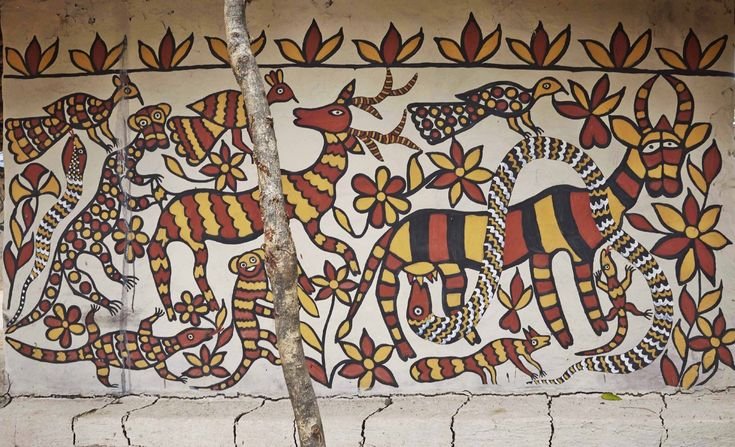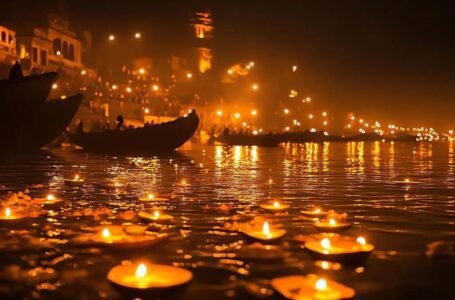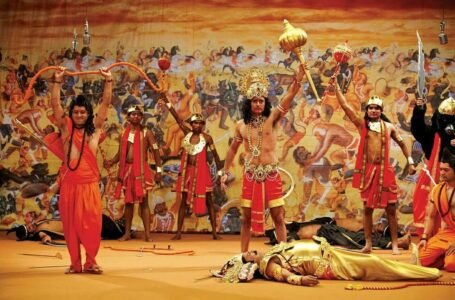Khovar and Sohrani Paintings of Jharkhand: A Declining Tradition Amid Industrialization

Khovar and Sohrani are ancient forms of tribal wall art from Jharkhand, deeply connected to the region’s cultural heritage. These beautiful paintings, created by indigenous women, are known for their intricate designs, often inspired by nature. However, these art forms are increasingly threatened by the rise of industrialization. While they have long been celebrated for their tradition and craftsmanship, they now face challenges in the face of modernity. Despite these struggles, the importance of these paintings remains undeniable, serving as a vital link to the past and a reflection of the community’s rich cultural identity.
Khovar and Sohrani paintings hold a special place in the tribal communities of Jharkhand, especially among the Santhal, Munda, and Ho tribes. Passed down through generations, these art forms are primarily created by women. The paintings are traditionally done on the walls of homes and huts, particularly during festivals, weddings, and other celebrations. Khovar, for instance, is painted during weddings, symbolizing fertility, prosperity, and the start of a new chapter. It is known for its vibrant colors, floral patterns, and geometric shapes, which fill the walls of the bride’s house.
Sohrani, another beautiful form of painting, is often seen in the homes of newlywed couples or during the harvest season. Like Khovar, it’s full of life and color, but its motifs are more closely connected to nature, featuring plants, animals, trees, and flowing water. These designs aren’t just decorative—they carry deep symbolic meanings that link the community to its ancestral beliefs. They’re blessings for abundance, health, and harmony, reinforcing the bond between the people and the land they live on.
The beauty of these paintings lies in the intricate patterns that are deeply inspired by the surrounding environment. Common motifs include spirals, circular designs, and depictions of plants and animals, each carrying its own meaning. For instance, the lotus is often featured in Khovar paintings, symbolizing purity and spiritual growth. Serpentine patterns, on the other hand, represent the flow of life and its cyclical nature.
The artists use natural dyes derived from plant extracts, minerals, and clay, which not only give the paintings their earthy, organic look but also tie them closely to the cultural and spiritual traditions of the tribal communities. These materials connect the art to the land, making the paintings more than just decorative—they become a reflection of the community’s deep bond with nature.
Over time, however, industrialization and modernization have significantly impacted these traditional art forms. As urbanization spreads and Jharkhand’s landscape changes with the growth of mining, agriculture, and infrastructure, the spaces where these paintings were once created are slowly disappearing. Many tribal communities are being forced to migrate to cities in search of work, leaving behind their ancestral homes and the practices tied to them.
The rise of synthetic paints has also contributed to the decline of these art forms, replacing the natural dyes that were once central to their creation. This shift not only diminishes the authenticity of the paintings but also weakens the deep connection to nature that defined them. With the pressure to earn a livelihood and the influence of global, commercial art trends, younger generations are moving away from these intricate and time-consuming traditional methods.
As modern lifestyles and mass media take center stage, the cultural significance of these paintings has gradually faded. While older generations continue to hold on to these traditions, they are becoming increasingly overshadowed by the fast-paced changes in the socio-economic landscape.
Recognizing the decline of Khovar and Sohrani art, several efforts have been made to revive and preserve these traditions. Cultural organizations, NGOs, and government initiatives have stepped in to document these art forms and encourage young tribal women to pick up the paintbrush once more. Workshops and exhibitions are being organized to highlight the beauty and cultural significance of these paintings, stressing their importance as part of the region’s heritage.
In addition, some tribal women have started incorporating these traditional designs into modern forms, like fabric prints and home décor. This has allowed the artwork to reach a wider audience and find a place in contemporary markets. These efforts have not only provided new opportunities for women artists but also ensured that the essence of Khovar and Sohrani art endures in a modern context.
Khovar and Sohrani paintings are much more than just decorative art; they are vital expressions of cultural identity, spirituality, and a deep connection to nature that have shaped the tribal communities of Jharkhand for centuries. These ancient art forms, passed down through generations, have played a central role in the lives of the Santhal, Munda, and Ho tribes. Traditionally, women are the primary artists, creating intricate patterns inspired by the natural world—flowers, animals, and geometric shapes—on the walls of homes during significant life events like weddings, harvests, and celebrations. Each painting carries symbolic meaning, conveying messages of fertility, prosperity, health, and harmony, and serving as a link between the present and ancestral traditions.
However, the future of these art forms is uncertain. The rapid pace of industrialization, urbanization, and the expansion of mining and agriculture in Jharkhand has led to the disappearance of the spaces where these paintings were traditionally created. Tribal communities, in search of work, are increasingly migrating to urban areas, leaving behind their ancestral homes and the practices that have sustained them. Younger generations, facing the pressures of modern life, are turning away from the intricate, time-consuming methods that once defined these paintings. The rise of synthetic paints and the influence of global commercial art have also diluted the authenticity of the paintings, further eroding the connection to nature that made them so special.
Despite these challenges, efforts to preserve and revitalize Khovar and Sohrani art have been gaining momentum. Cultural organizations, NGOs, and government initiatives have stepped in to document the art forms, offer workshops, and raise awareness about their cultural importance. These efforts have sparked a renewed interest among young tribal women, inspiring them to take up the brush and keep the tradition alive. Additionally, some artists have found ways to incorporate Khovar and Sohrani designs into modern products, such as fabric prints and home décor, helping the artwork reach a broader audience and survive in the contemporary market.
In conclusion, while Khovar and Sohrani paintings face significant challenges in the face of industrialization and modernity, they remain powerful symbols of Jharkhand’s cultural heritage. The ongoing efforts to revive and adapt these traditions offer hope that their intricate patterns and deep meanings will continue to be passed down for generations to come. These paintings are not relics of the past, but living expressions of identity and a deep connection to the earth, and with continued support, they can remain an essential part of the region’s cultural landscape.


